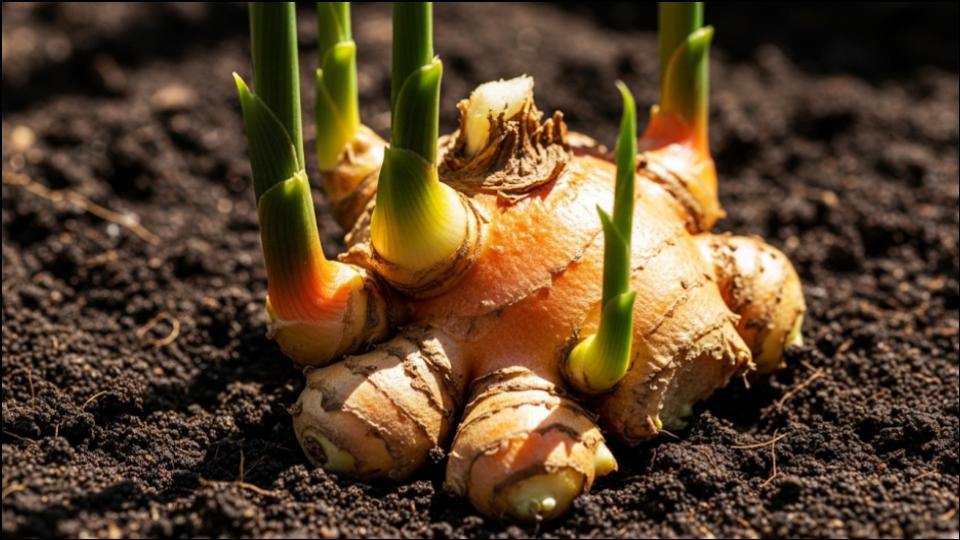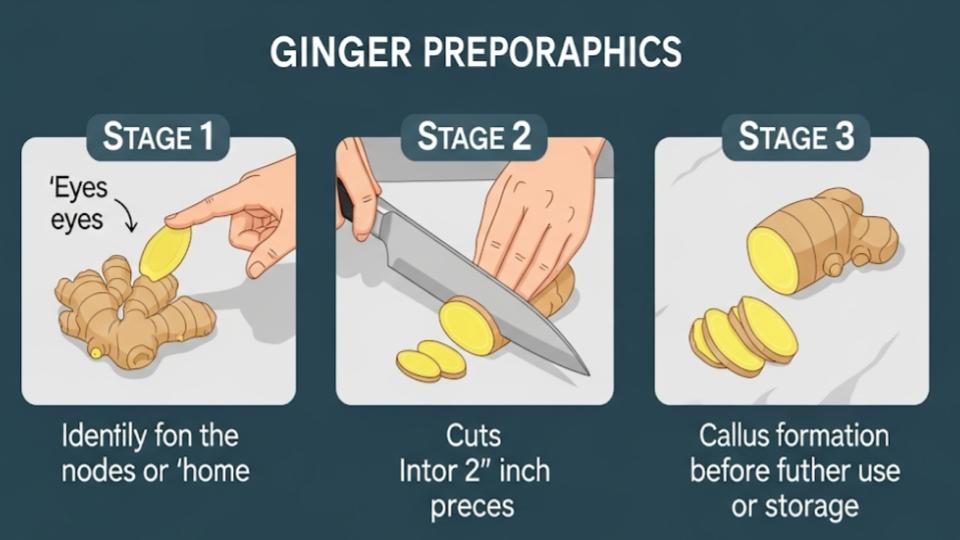
For home cooks and gardeners seeking to capture the pungent, spicy flavor of fresh ginger, the solution may be found in their own backyard or patio container. The process of cultivating this tropical spice is more accessible than many believe. This guide provides expert-backed instructions on how to plant ginger root (Zingiber officinale), ensuring a successful harvest for vibrant culinary use.
With basic materials and an understanding of the plant’s needs, gardeners can cultivate a steady supply of ginger that far surpasses the quality of store-bought alternatives in both freshness and potency.
Plant ginger root
| Key Fact | Detail |
| Ideal Planting Time | Early spring, after the last frost has passed. |
| Soil Requirements | High-quality, well-draining potting soil rich in organic matter. |
| Sunlight Needs | 2-5 hours of direct sun; partial shade is ideal. Avoid intense afternoon sun. |
| Time to Harvest | Approximately 8 to 10 months for a mature rhizome. |
Selecting the Right Foundation: Choosing a Ginger Rhizome
The journey to growing ginger begins with selecting a healthy piece of the root, technically a rhizome. Experts recommend choosing a piece that is plump, firm, and has several visible buds, often called “eyes.” These small, horn-like protrusions are where the new green shoots will emerge.
“Look for a rhizome that feels heavy for its size and has smooth, unwrinkled skin,” advises the University of Vermont Extension. Shriveled or moldy ginger should be avoided as it may not sprout or could introduce disease to the soil.
While ginger from a grocery store can be used, horticulturalists note that some commercial ginger is treated with a growth inhibitor to prevent sprouting on the shelf. For best results, sourcing an organic ginger rhizome or one specifically sold as “seed ginger” from a garden center or online supplier is recommended. If using store-bought ginger, soaking it in water overnight may help remove any potential inhibitors.
Preparation and Planting for Success
Before planting, the rhizome should be prepared to encourage growth. If the piece is large, it can be cut into smaller sections, ensuring each piece is at least 1-2 inches long and has a minimum of one or two healthy eyes.
After cutting, many gardeners allow the pieces to sit in a dry, airy place for 24 to 48 hours. This allows the cut surface to form a callus, which helps prevent the rhizome from rotting in the soil, a critical step for a healthy plant.
Container vs. Garden Bed
Ginger thrives in both containers and garden beds, provided its core needs are met. Containers offer excellent control over soil composition and moisture, which is beneficial in regions with heavy clay soil or unpredictable weather. A wide, shallow pot is preferred, as ginger roots grow horizontally.
For garden planting, select a location that receives partial shade or morning sun. “Intense afternoon sun can scorch the leaves and stress the plant,” according to a guide from the University of Florida IFAS Extension. The soil must be loose and well-draining. Amending the soil with compost or other rich organic matter before planting is highly beneficial.

The Planting Process
The method for how to plant ginger root is straightforward.
- Depth: Place the rhizome pieces about 2 to 4 inches deep in the soil.
- Orientation: Position the pieces with the growth buds pointing upward. If the buds are not obvious, laying the piece flat is acceptable.
- Spacing: Space the pieces about 6 to 8 inches apart to give each plant enough room to expand.
- Watering: After planting, water the soil thoroughly. Keep the soil consistently moist but avoid waterlogging, which can lead to rot.
Nurturing Your Crop: Care and Maintenance
Once planted, ginger requires consistent care. The soil should never be allowed to dry out completely. As the leafy stalks grow, which can reach 2 to 3 feet in height, the plant will require more water.
Fertilizing is also important for developing large, flavorful rhizomes. Experts at the Royal Horticultural Society (RHS) in the United Kingdom suggest applying a balanced liquid fertilizer every few weeks during the growing season, which typically runs from spring through late summer. A fertilizer low in nitrogen is often recommended to encourage root growth over foliage.
The Final Step: Harvesting Ginger for Maximum Flavor
The patience required for growing ginger pays off at harvest time. Ginger can be harvested in small amounts about four months after planting. This “young ginger” is less fibrous, has a milder taste, and does not need to be peeled.
For a fully mature ginger rhizome with the most potent flavor, gardeners should wait 8 to 10 months. The signal for peak maturity is when the green tops begin to yellow and fall over.
To harvest, carefully loosen the soil around the edges of the plant with a small trowel or garden fork and lift the entire rhizome from the soil. The entire clump can be harvested at once, or a piece can be broken off, and the rest of the plant can be carefully replanted to continue growing. After harvesting, wash the rhizomes and allow them to air dry before storing.
The successful cultivation of how to plant ginger root at home demystifies the process, making it an achievable project for many. By following these expert-backed steps, anyone can enjoy the unparalleled zest and aroma of a fresh, homegrown spice.
A Factual Guide on How to Plant an Avocado Seed and Nurture a Tree
